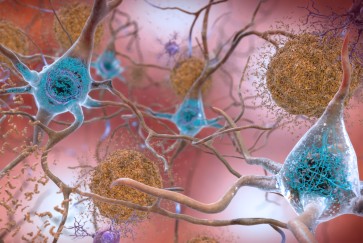“We have a huge need for efficient, reliable and objective autism-screening tools. Currently, there’s nothing that could easily and dependably be administered to every single child.”
Communication sciences and disorders professor Molly Losh is a pioneer in multi-generational research, looking into the genetics of autism to identify the condition earlier and understand its causes. Losh is one of several Northwestern faculty who are zeroing in on the behavioral, cognitive and genetic signatures of autism spectrum disorder (ASD).

A licensed speech-language pathologist and communication sciences and disorders professor, Meg Roberts is focused on interventions: teaching parents how to help their autistic toddlers communicate and connect with others.
“It is economically very difficult for many parents of young kids with autism to afford the recommendation of 30 hours of intervention a week,” Roberts says. “But if the parents learn the strategies, they become one of the interventionists.”
Affecting an estimated 1 in 68 children in the United States, ASD is a developmental disability characterized by difficulties with emotional, social and communication skills. The most obvious signs of ASD tend to appear between 2 and 3 years old.
But researchers like Losh and Roberts, along with psychology professor Sandra Waxman, are forging cross-disciplinary collaborations that can enable earlier, more effective autism diagnosis and intervention, bringing hope and help to many families.
Detection in big data
Losh looks at the genetic roots of autism to try to identify ASD earlier and understand how it is transmitted in families. Her research has shown that genetic risk for autism can be seen in subtle personality and language traits in parents or relatives who do not have autism, but who carry certain genetic markers. Her recent work — examining school test scores of parents of children with ASD — has only confirmed for Losh the role of genes in autism.
“When we look at school test scores, we see parents of children with autism are more likely to show a split between their language and math skills, with one being significantly better than the other,” Losh says. “What’s even more amazing is the severity of this discrepancy predicted the severity of autism in their children.”
Losh recently linked up with economics professor Joe Ferrie and David Figlio, dean of Northwestern’s School of Education and Social Policy, to extend this work. Using Figlio’s dataset of pre-K literacy screenings across Florida, the researchers found that kids who were good at letter recognition but struggled with sound recognition were 2.5 times more likely to be diagnosed with autism than those who did not show this discordance.
“We also looked at non-autistic siblings of people with autism, and they too were more likely to show this split,” Losh says. “It’s clear that genetic factors not only have a role in autism, but also that family members without the condition show some of the same traits.”
On the heels of these findings, Losh and Ferrie are examining archival datasets containing childhood test scores and behavioral assessments spanning three generations within families — grandparents, parents and children.
“There has been very little work at the three-generation level, because it wasn’t really possible until now,” Ferrie says. “This dataset allows us to show, with even more confidence, that autism is genetic and carried along family lines.”
Intervening earlier
Much of Losh’s work is focused on the genetic underpinnings of autism, and while she hopes a genetic test for autism will one day be a reality, she says early and sustained intervention is currently the best tool we have. Clinicians today can reliably diagnose autism by age 2, but identifying the condition earlier would facilitate better outcomes.
“When I got into autism research in the late 1990s, the portion of kids with autism who were non-verbal was just over half,” Losh says. “Now, it’s about one-quarter, and that’s in large part due to early intervention.”

In her lab, Meg Roberts sees the life-altering impact of autism intervention every week. And now, she’s working with Losh to understand how parents’ own traits may influence their ability to help their children with autism, and how interventions can be tailored within families to maximize benefit.
“This is not about blaming parents,” Roberts says. “Every parent comes with amazing strengths. This is about how we as interventionists can modify our approach so that we can better support parents.”
Roberts has also partnered with psychology professor Sandra Waxman to develop identification and intervention tools simultaneously.
Tracking eyes in infancy
Siblings of children with autism, like their parents, are a powerful tool for research.
In prior work, Waxman used innovative eye-tracking software to find out what babies are drawn to. Now, Waxman and Roberts want to know if children with autism, and their siblings, lack that ability, in order to better understand autism and tailor interventions more precisely.
In Waxman’s experiments with typically developing children, she discovered that even three-month-old babies listening to human speech can form categories of objects. But, interestingly, when the human speech is replaced by a series of beeps, the babies do not form a category.

“This work shows the link between language and cognition, which is unique to humans, is available far before infants begin to speak.” Waxman says. “In children with autism, that language-cognition link is disrupted, and the ability to learn about and from others may be disrupted as well.”
Waxman and Roberts are using the same test in the younger siblings of children diagnosed with autism. After a couple of years, Waxman and Roberts will look for trends in the test data, comparing those who were eventually diagnosed with autism with those who were not. It’s possible that the eye-tracking test could be used as an earlier marker for ASD.
“Language, in typically developing children, provides a cognitive boost that beeps and tones don’t offer,” Waxman says. “We hypothesize that in children with autism, language won’t provide this boost, and it might even be that beeps and tones are preferred.”
If Waxman’s hypothesis is confirmed, and an aversion to speech is identified in children with autism — if they prefer the beeps — the researchers could try to make speech more acceptable to these children.
“We could get creative with sound engineers,” Waxman says. “We might be able to use Siri or other synthetic speech tools to make language more palatable and help mend the language-cognition link.”
This combination of basic science and on-the-ground intervention blends Roberts’ and Waxman’s complementary interests and abilities.
“I want to know what works and for whom it works,” Roberts says. “Sandy wants to know why things happen. And if she can figure that out, then I can design the interventions to make it work for families.”
Research that reinforces
Losh, Roberts, and Waxman all believe that the various research approaches underway at Northwestern complement and inform each other, and even more importantly, will offer help to many families affected by autism.
“By examining clinical and behavioral features of autism, we can better understand underlying causes — both genetic and environmental,” Losh says. “And the more we know about the precise causes of autism, the more effective and targeted our interventions can be.”

